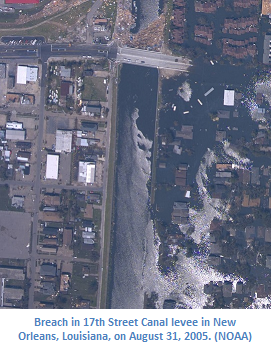by Shawna Ganley
As New York City receives its first distribution from the recent $51 billion federal disaster aid package for Hurricane Sandy ($61 billion including flood insurance funding), the Disaster Relief Appropriations Act of 2013 contains only a few forward-looking measures to prevent future losses from projected increased storms due to climate change.
To its credit, Congress has allocated $20 million to the Army Corps of Engineers for new studies on reducing storm damage in the areas hit by Hurricane Sandy, plus additional funds to expedite studies previously under way. More importantly, the Act requires the Corps to spend almost $3 billion on constructing projects that will “reduce future flood risk in ways that will support the long-term sustainability of the coastal ecosystem and communities and reduce the economic costs and risks associated with large-scale flood and storm events in areas…affected by Hurricane Sandy.” Similarly, the Act allows, but does not require, the Department of Transportation to spend up to $5.4 billion for “reducing risk of damage from future disasters in areas.” The Act also allocates some funding (albeit much less) for the Department of Interior to “increase the resiliency and capacity of coastal habitat and infrastructure to withstand storms,” and to the EPA for grants to states and tribes for improving wastewater and drinking water facilities to withstand risk from future flooding. A lesser amount goes to watershed protection and reforestation programs, though it is not clear if this is for restoration and repair, as opposed for minimizing future risks. In addition, presumably some of the funds to FEMA will be used for the “buyback” program discussed in an earlier blog.
Despite these few instances in an Act dozens of pages long, the vast majority of funding in the Act goes to rebuilding, and understandably so. Yet is unclear how−or if−agencies will coordinate to ensure that the rebuilding efforts do not interfere with potential longer-term projects to create buffer zones or otherwise attempt to protect the area from future exposure to flooding, storm surges, and sea level rise.
The predicament stems from one of long-term planning. One key reason is because federal flood control maps only look at historical floods, not the impact of the increased frequency and intensity of storms that scientists say will increase with climate change, and the potential for even increased flooding due to sea level rise. This in turn impacts not just disaster planning, but also the Federal Flood Insurance Program, which comprised almost $10 billion in the post-Sandy disaster relief. Basing its projections on outdated maps may woefully underestimate the risks and costs of future storms, a miscalculation that only ends up costing taxpayers who foot the bill to make up for inadequate insurance premiums and exorbitant payouts in areas exposed to excessive risk.
The deeper reason, of course, is the elephant in the room: the unwillingness in Congress to address climate change. Indeed, the legislative history behind the Hurricane Sandy relief bill reveals just this. Leading up to passage of the Act, House Representative Henry Waxman (D-Calif) sought to specify in the Act that flood risk studies commissioned with the disaster funds should consider sea level rise and climate change, yet his proposed amendment was struck down. “This is the height of irresponsibility,” he argued, for it to be “taboo to mention the words ‘climate change’” in Congress.
The height of sea level change certainly won’t change if Congress keeps up this type of mindset, and neither will the mounting bills of future national disasters from increasing drought, crop damage, heat waves, sea level rise, hurricanes, and flooding. Unfortunately the $61 billion in federal funding addresses only Hurricane Sandy, and thus even its limited provisions to minimize future flood risks do not look at the larger risks to other coastal areas and the nation as a whole. Perhaps the aid bill is not the proper place for this, but, in an era of apparent Congressional concern over future spending and budget busters, the wake of Hurricane Sandy should make it clear that the nation should take heed to address climate change by taking steps now to minimize our future cost exposure.


